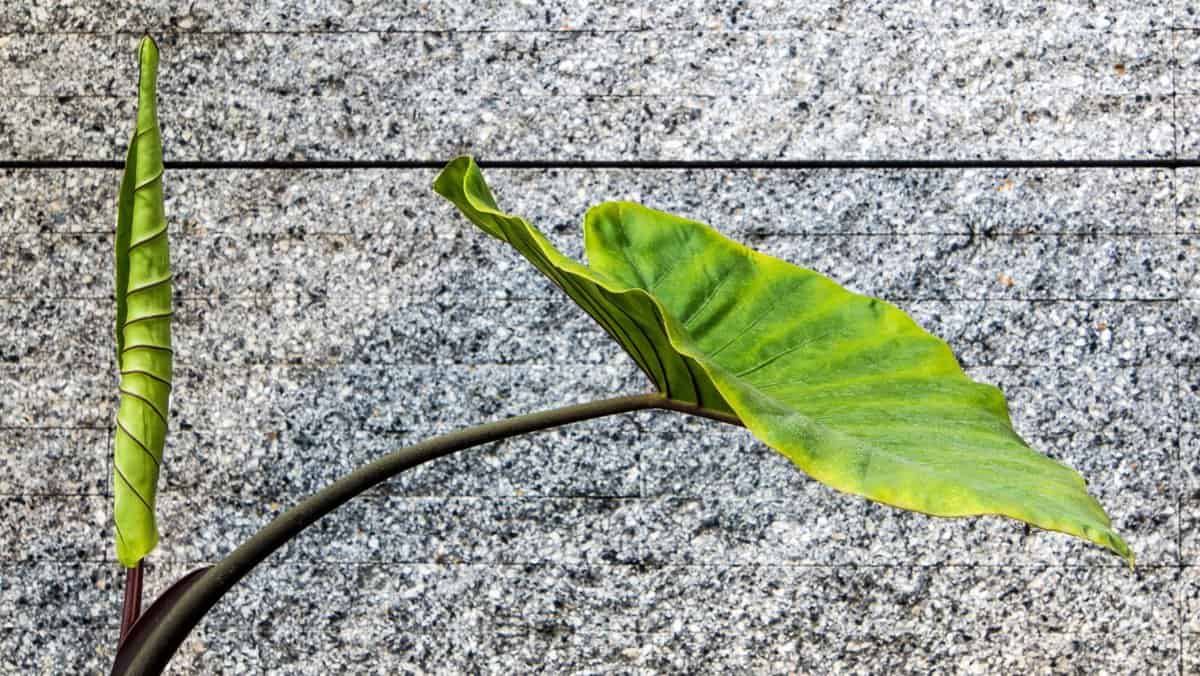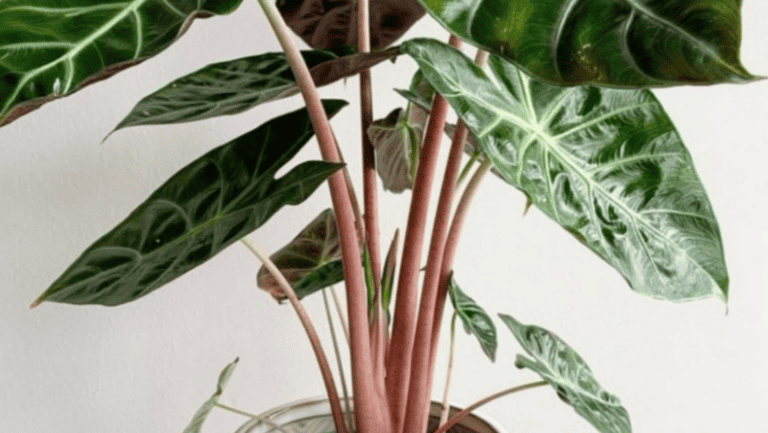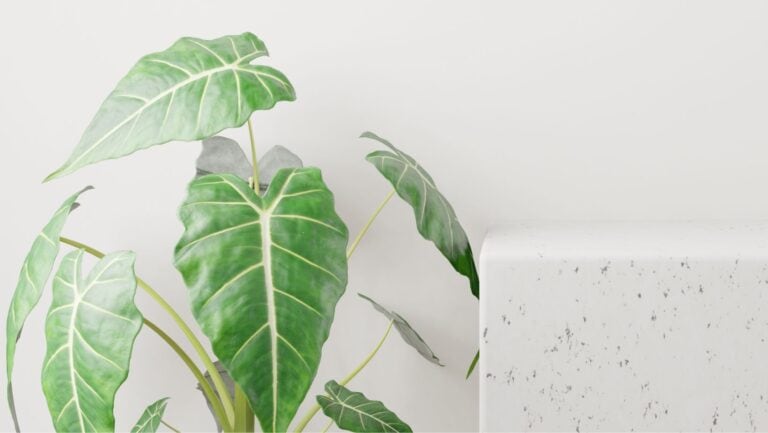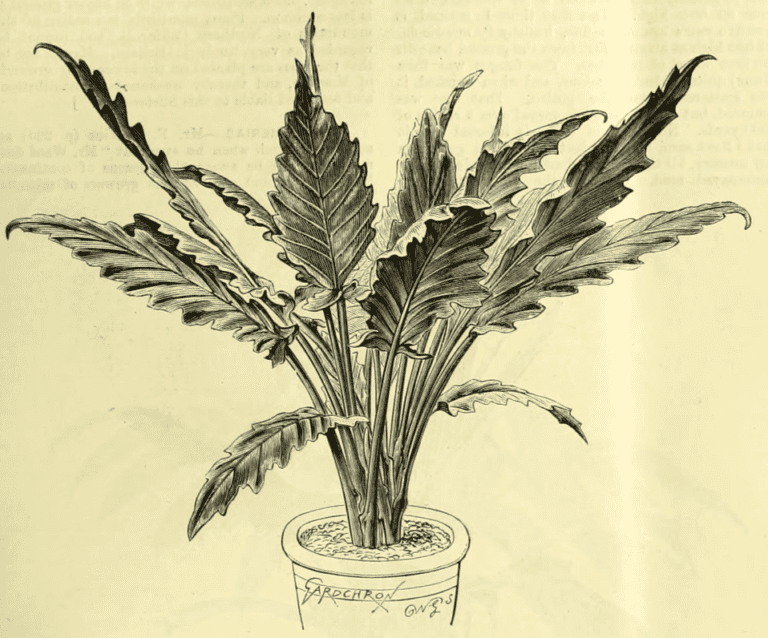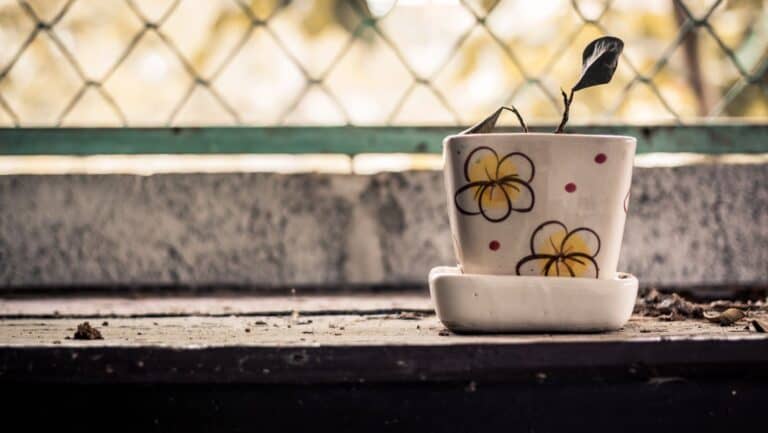How Do You Keep Alocasia Upright?
To answer that question we need to know two things:
- what kind of Alocasias are we talking about. Because the reasons for it to be ‘not upright’ might be different
- how healthy is your plant. Because when your plant is drooping due to care issues (and those beauties can be pretty high maintenance) the solutions are not the same as when your plant is just too happy and big.
CASE #1: Your Alocasia Is Getting Too Big
There exist over 80 recognised species of Alocasias, that is without counting many of the newer hybrids. And they are not all the same. They differ in size from 10-20 cm tall to 6 meter tall plants (read more in How Big Can an Alocasia Plant Grow?).
One thing to take into account is that Alocasia’s stems are rhizomes, which means that they develop underground and roots and shoots grow from their nodes. What we see going down from the leaf are not stems, but petioles. Once older leaves die out, their dried bases cloth the rhizome. Later on, roots might grow down from the same nodes where the leaves were.
Some Alocasias have erect stems, which means that they remain upright and normally don’t need any external support. Others have decumbent stems, which means that the stem lies flat and turns upward at the end.
Most of them, however, are described in scientific literature as ‘erect to decumbent’ or ‘decumbent to erect’, which means that younger plants have an upright stem, but as new leaves emerge and older leaves die out, the older part of the stem lies down, leaving only the tip growing upright and the rest of it gradually descends into the soil, lies there comfortably, grows roots and stocks nutrients. Like a happy retiree.
If your mature plant has many leaves, some of them might naturally grow kind of sideways as the older parts of the rhizome tend to lie horizontally. You might think of supporting the rhizome to get a more upright plant, but that is not a good idea, as it is contrary to your plant’s natural behaviour and might upset her.
Do Alocasias need moss poles?
No. Contrary to some other Aroids (Monstera, Philodendron), Alocasia plants are not climbers. They don’t have vining stems with aerial roots that attach to the bark of trees and help them get closer to the jungle canopy. No, that story is not about Alocasias. And therefore they don’t need any moss poles to imitate the process.
If the rhizome is getting so long that you think about setting it up on a moss pole, consider propagation instead. Cut the rhizome into chunks with several nodes on each and put them together in a pot. This way you’ll end up with a younger looking bushier plant.
CASE #2: Your Alocasia Is Drooping or Leaning
When your Alocasia is not upright due to drooping or leaning, it’s a totally different case. To solve these problems, you need to fix your plant’s care routine and growth conditions. But worry not, it’s not rocket science neither.
How do you stop Alocasia from drooping?
Drooping is a very common ‘tantrum’ in Alocasias. Whenever your plant is unhappy about something, she gives you a thumbs-down with the oldest leave. And more than one, if you don’t get it.
In my experience, I’ve seen drooping caused by under watering, overwatering, low light, or pests (red spiders, to be exact). Usually you can figure out what that is. Inspect your plant for signs of pests and disease and think of any recent changes in care. Have you forgotten to water her? Have you moved her to a new spot? Analyze and react.
Don’t expect that once you resolve a given care issue the drooping leaves will return to upright. These leaves are sacrificed like a distress flare. Let them die out naturally. Know, that even if that is the last leaf, your plant might still be salvageable (see Can Alocasia Survive Without Leaves?). Once your plant is happy, she will quickly give you a thumbs-up with a new upright leaf.
How to fix a leaning Alocasia plant?
Sometimes Alocasia is not drooping, but leaning. It happens when she is seeking light. She literally stretches out to the nearest window. The petioles get longer and are all directed towards that much-wanted light.
The solution is to move your plant to a better-lit spot. You might also want to turn your Alocasia regularly to encourage a more balanced development.
Do Alocasias need to be staked?
Normally, Alocasias don’t need staking, but if your plant is leaning hazardously or you have a larger Elephant Ear in a pot and it is taking too much space, you might want to support those petioles to make a more compact ‘bouquet’. Consider using those round or half-round wire stakes that you can easily find on Amazon. They are perfect for the task of containing your plant in its dedicated space.

